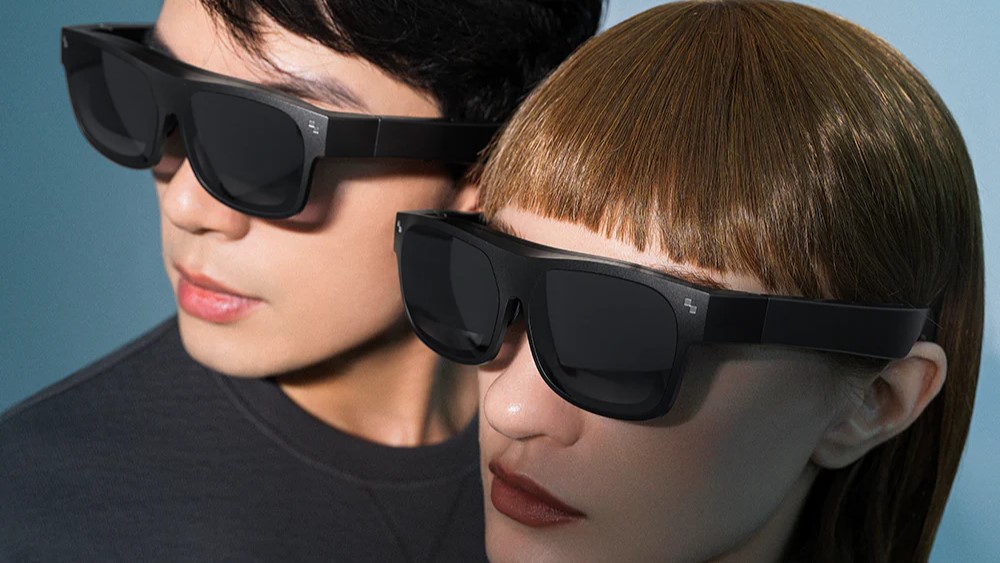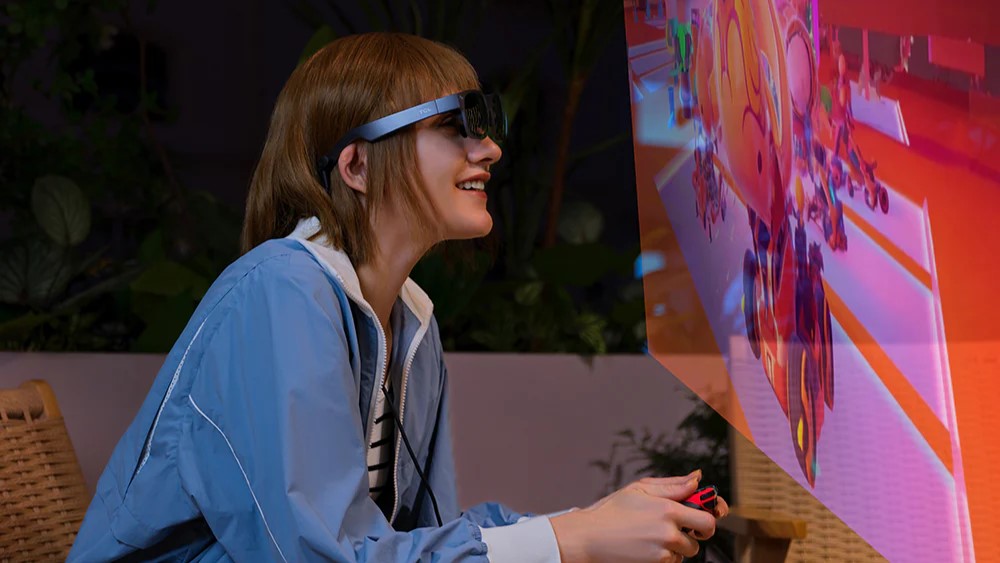TCL has launched a new pair of AR glasses with 120Hz OLED screens
The TCL Nxtwear S Plus glasses are here

There’s a new pair of AR smart glasses on the scene, in the form of the TCL Nxtwear S Plus specs – a follow-up to the TCL Nxtwear S, which we reviewed in the middle of last year – priced at $399 / £399 / AU$699.
Much like their predecessors, these glasses can be connected to a compatible device like a phone or console – either by a USB-C Display Port, or by using adaptors that you’ll have to pay extra for – so you can enjoy your favorite show, game, film, or app on a large virtual screen.
For 2D visuals, the OLED displays offer Full-HD resolution (1920 x 1080 pixels) on a display that’s the equivalent screen size of a 215-inch screen placed six meters from your face. For 3D pictures you’ll get a resolution of 3840 x 1080 pixels

In terms of improvements that warrant the Plus title, these TCL specs do have a few important upgrades over the originals.
First, they now boast 600 nits of brightness, 200 more nits than the 400-nit TCL Nxtwear S, and 100 more than the 500-nit Xreal Air 2 Pro specs. This should lead to more vivid colors and better contrast in the displayed picture.
The dual displays also now have a max refresh rate of 120Hz rather than just 60Hz which should make the visuals appear much more smooth than before. We kind of wish they went up to 4K, but this is a resolution other smart specs also have yet to achieve at this price point – so our disappointment isn’t exclusive to the TCL Nxtwear S Plus.
Lastly, the new TCL Nxtwear S Plus smart glasses weigh a whole 2g less than their already lightweight predecessors, coming in at 87g instead of 89g. Based on our tests, smart glasses that weigh this little don’t feel noticeably heavier than wearing a pair of regular specs.
Sign up for breaking news, reviews, opinion, top tech deals, and more.

Some things to watch out for
We haven’t tested the TCL Nxtwear S Plus glasses yet, so our advice would be to try them, or read a few reviews, before you buy them because of two main factors: heat and adapters.
When testing the original TCL Nxtwear S smart specs we found that the bridge got uncomfortably hot within about 20 minutes. Other smart glasses like the Xreal Air 2 Pro and original Xreal Air glasses get around this issue by having the front end of the arm get warm instead – so the hot component isn’t touching your face – so it’s possible that these new TCL Nxtwear glasses won’t have the same issue as the old version.
If the bridge still does get quite warm then you might not be able to enjoy the TCL glasses to their fullest.

Adapters are also an issue for a lot of smart glasses. While they can interface with a good number of devices, you’ll need quite a few not-so-optional-add-ons to get the best experience.
These include special cables that allow you to hook them up to more devices, and adapters that have their own internal battery, so you don’t drain the connected device’s battery as quickly. Picking up all of these extras can add to the cost, which is always a shame when you’re already spending $399 / £399 / AU$699 on the device itself.
Noise leakage can also be a problem for smart glasses with their open-ear speakers, though the TCL Nxtwear S Plus glasses have a Whisper Mode that promises to keep noise leakage from their 0.5mm stereo speakers to a minimum . We've yet to use any smart glasses that don’t have a problem with audio escaping to the people around you, even if they have their own version of Whisper Mode, but hopefully the TCL Nxtwear S Plus specs will convince us that smart glasses don’t have to be noisy.
You might also like

Hamish is a Senior Staff Writer for TechRadar and you’ll see his name appearing on articles across nearly every topic on the site from smart home deals to speaker reviews to graphics card news and everything in between. He uses his broad range of knowledge to help explain the latest gadgets and if they’re a must-buy or a fad fueled by hype. Though his specialty is writing about everything going on in the world of virtual reality and augmented reality.